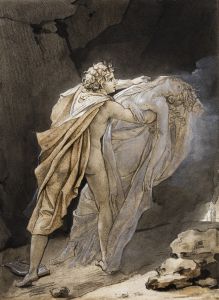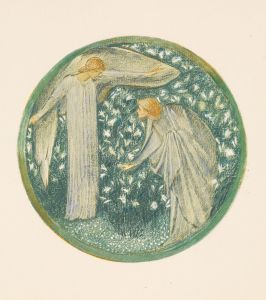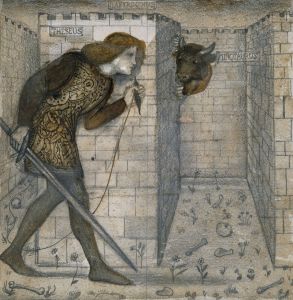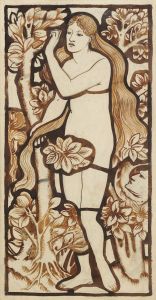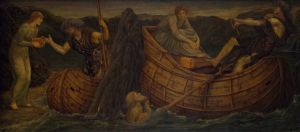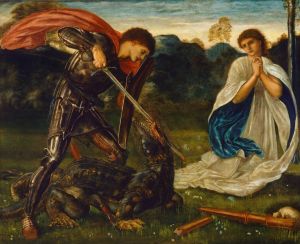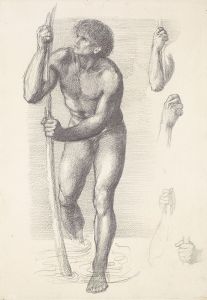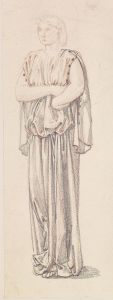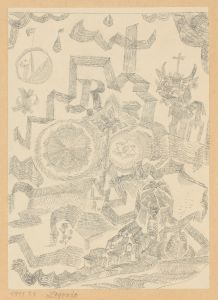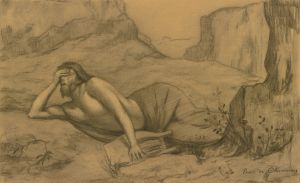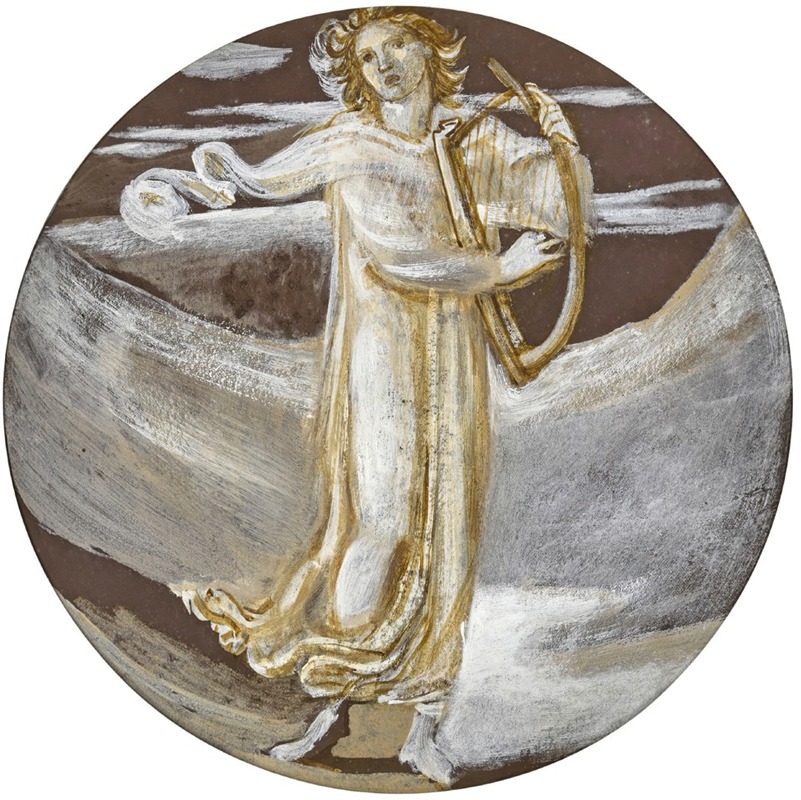
Orpheus and his Lute
A hand-painted replica of Sir Edward Coley Burne-Jones’s masterpiece Orpheus and his Lute, meticulously crafted by professional artists to capture the true essence of the original. Each piece is created with museum-quality canvas and rare mineral pigments, carefully painted by experienced artists with delicate brushstrokes and rich, layered colors to perfectly recreate the texture of the original artwork. Unlike machine-printed reproductions, this hand-painted version brings the painting to life, infused with the artist’s emotions and skill in every stroke. Whether for personal collection or home decoration, it instantly elevates the artistic atmosphere of any space.
Sir Edward Coley Burne-Jones was a prominent British artist associated with the Pre-Raphaelite Brotherhood, a group known for their detailed and vibrant works inspired by medieval and early Renaissance art. One of his notable works is "Orpheus and his Lute," which reflects his fascination with mythological and literary themes.
"Orpheus and his Lute" is a painting that draws upon the ancient Greek myth of Orpheus, a legendary musician, poet, and prophet. In mythology, Orpheus is renowned for his ability to charm all living things and even inanimate objects with his music. His lute, or lyre, is central to his myth, symbolizing the power of art and music to transcend the ordinary and touch the divine.
Burne-Jones's depiction of Orpheus is consistent with his style, characterized by elongated forms, intricate details, and a dreamlike quality. The painting captures Orpheus in a moment of serene contemplation, his lute in hand, surrounded by an ethereal landscape that enhances the mystical atmosphere. The use of soft colors and delicate lines is typical of Burne-Jones's work, creating a sense of harmony and otherworldliness.
The Pre-Raphaelite movement, with which Burne-Jones was closely associated, sought to return to the detail, intense colors, and complex compositions of Quattrocento Italian art. They rejected the mechanistic approach that had come to dominate the academic art of their time. Burne-Jones, in particular, was influenced by the works of Dante Gabriel Rossetti and William Morris, both of whom were key figures in the movement. His works often explore themes of love, death, and the passage of time, frequently drawing on literary and mythological sources.
"Orpheus and his Lute" exemplifies Burne-Jones's interest in the intersection of music and visual art, a theme that recurs throughout his oeuvre. The painting not only reflects the myth of Orpheus but also serves as a meditation on the role of the artist as a creator and visionary. Through Orpheus, Burne-Jones explores the idea of art as a means of communication with the divine, a way to access deeper truths and emotions.
Burne-Jones's work was highly influential during his lifetime and continues to be celebrated for its beauty and depth. His paintings, including "Orpheus and his Lute," are housed in various collections around the world, appreciated for their contribution to the Pre-Raphaelite legacy and their exploration of timeless themes.
In summary, "Orpheus and his Lute" by Sir Edward Coley Burne-Jones is a significant work that embodies the artist's fascination with mythology and the power of art. Through his depiction of Orpheus, Burne-Jones invites viewers to consider the transcendent nature of music and the enduring impact of mythological narratives. The painting remains a testament to Burne-Jones's skill and his ability to weave complex themes into visually captivating art.





